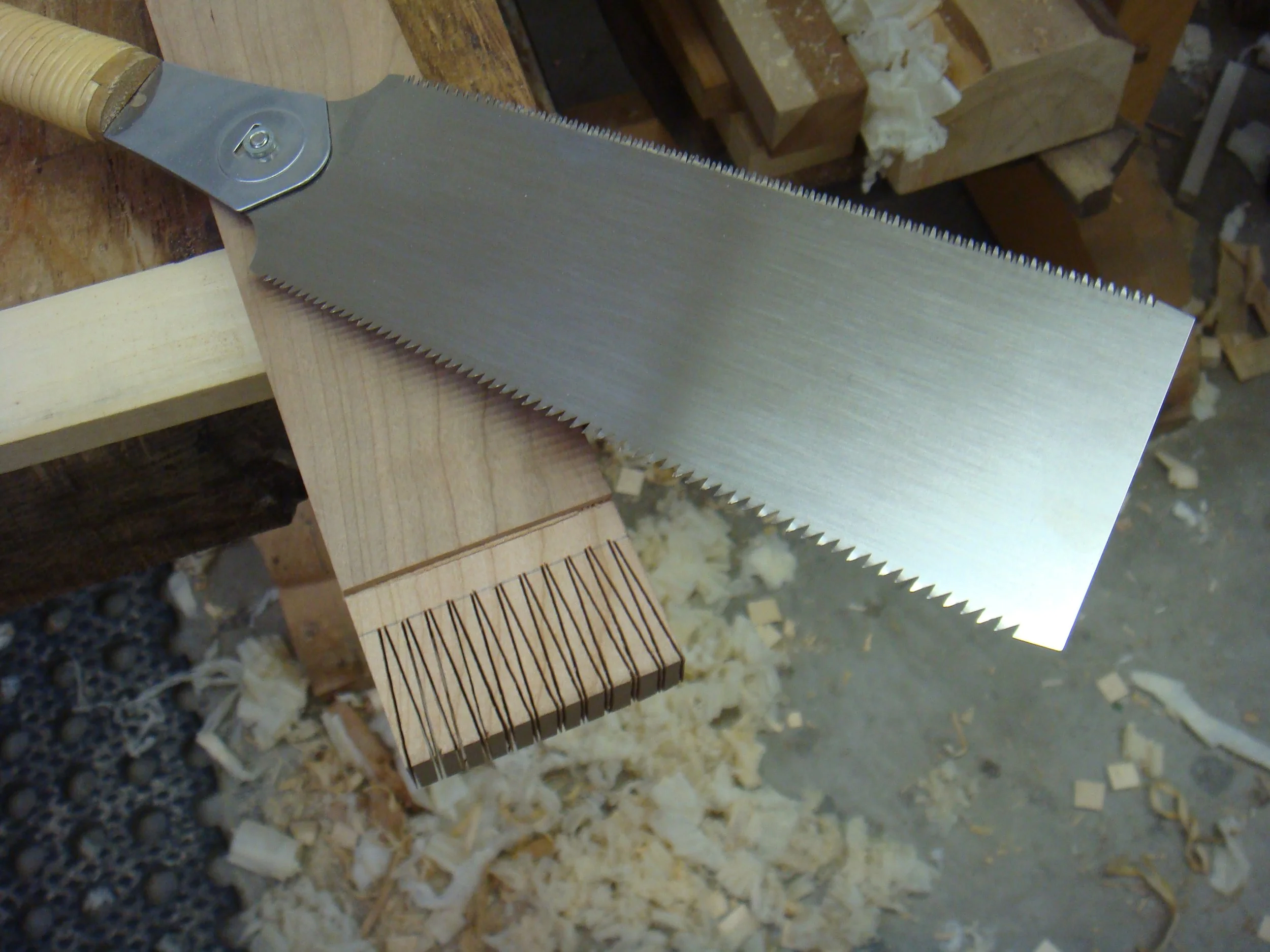Japanese Tools with Yann Giguère
5 Days, For Beginners
Summer 2026
August 10-14
This five-day class will be a hands-on workshop focused primarily on the sharpening and setting up of traditional Japanese chisels and hand planes. We will use saws as well but there is no set up needed for the saws. These are foundational skills rooted in the Japanese tradition of woodworking yet can be readily applied to any genre of woodworking. The course will be packed with details that usually require a lengthy apprenticeship to learn. There's a lot to cover, so bring tools, hands, and be ready to work!
Please read the Student Greeting from Yann Giguere. It has important information about purchasing tools and making good decisions as well as specifics about chisels, planes, saw blades, etc. You'll find links to recommended tool dealers on the second page. Yann advises you to purchase and/or acquire tools early.
You will be taught the fundamentals for setting up and using Japanese hand tools for use in cutting traditional joints. This class is a prerequisite to Jon Billings’ Making Shoji class.
In this five-day course, we'll start by tuning up your waterstones. We’ll then learn basic setup and sharpening technique on your own chisel. We cover removing and resetting the handle, fitting the handle ring, preparing the back, dealing with the hollow ground, blade angles and subtleties of honing with Japanese waterstones. Sharpening is done by hand with no guides in the traditional manner.
Next we move into the hand plane, first learning to flatten the back using the uradashi technique of forming the blade with a hammer and anvil. Then we’ll progress to honing on a steel plate for perfect accuracy, followed by finish sharpening and trimming the blade as necessary. Next, the chip breaker is carefully shaped, honed, and fit to the main blade. With the blades ready, the block is trimmed as needed and fit with the blades. A scraper plane can then be set up and used to shape the plane base to the proper contours. Finally, we’ll learn how to micro-adjust the blade settings and make shavings!
With our tools in shape, we begin discussing wood grain types and proper orientation. You will learn how to flatten and square up the stock you will use for joinery. Then layout of parts for some practice joinery. We'll cover basic chisel techniques while cutting out a mortise by hand. After that, we'll use Japanese handsaws for cutting our tenon. Final trimming and tenon shoulder adjustments will come next, followed by hand planing to finish the surfaces. Lastly, we’ll assemble the parts, and execute final trimming.
REQUIRED (Basic Tool List)
Japanese sharpening combination water stone 1000/6000 grit
1/2” bench chisel (Please ensure that at least one of your chisels is a new Japanese style in order to practice setting the handle ring )
Japanese smoothing or block plane (new Japanese plane, ideally 48mm wide (blade). 42mm or 55mm is also fine)
Beveled straight edge (for use with the plane and for milling)
Japanese saw 210mm ryoba style
Medium hammer 450-570g
Small Japanese hammer 225g
2-3 sheets 220 wet dry sand paper
Square
Pencil, square, old towel or large rag.
RECOMMENDED (Ideal Tool List)
Japanese sharpening water stone 400 grit
Japanese sharpening water stone 1000-1200 grit
Japanese sharpening water stone 3000-4000 grit
Japanese sharpening water stone 6000-10 000 grit
1/2” and any other size Japanese bench chisels 1” is great.
1/2” Japanese push chisel
Japanese smoothing or block plane 48mm
Japanese scraper plane (tachiganna) 42mm or 48mm
Japanese saw 210mm and 240mm ryoba style
Japanese saw 210mm or 240mm crosscut dozuki (backsaw)
Medium Japanese hammer 450-570g
Small Japanese hammer 225g
Marking gauge
2-3 sheets 220 wet dry sand paper
Beveled straight edge (for use with the plane and for milling)
Japanese square (sashigane)
Standard square
Pencil, old towel or large rag.
Contact Mokuchi to purchase tools. As a Japanese tool retailer Mokuchi provides guidance on selecting tools and can set tools aside for you ahead of class.
Prerequisites
For beginners. This class will give you the fundamentals for setting up and using Japanese hand tools. This class is a prerequisite for Jon Billings’ Making Shoji class.
Note: This training is physical and demands a lot of the body. You'll be doing a great deal of hand sharpening which can tax finger, hand and arm strength. It’s also dirty. Sharpening paste can stain hands and clothes. If you have concerns, please reach out to us and we'll talk it through.
Class Information and Registration
Class runs from 9:00 am to 5:00 pm Monday through Friday in Building 315 at Fort Worden. Map
Please read our What to Expect page for general information about the school.
Please also read our Registration Policy, and sign up for the waitlist if the course is full.
Class size: 10
Cost: $1,000
Materials Charge: $75





Japanese Tools
Ashland, OR